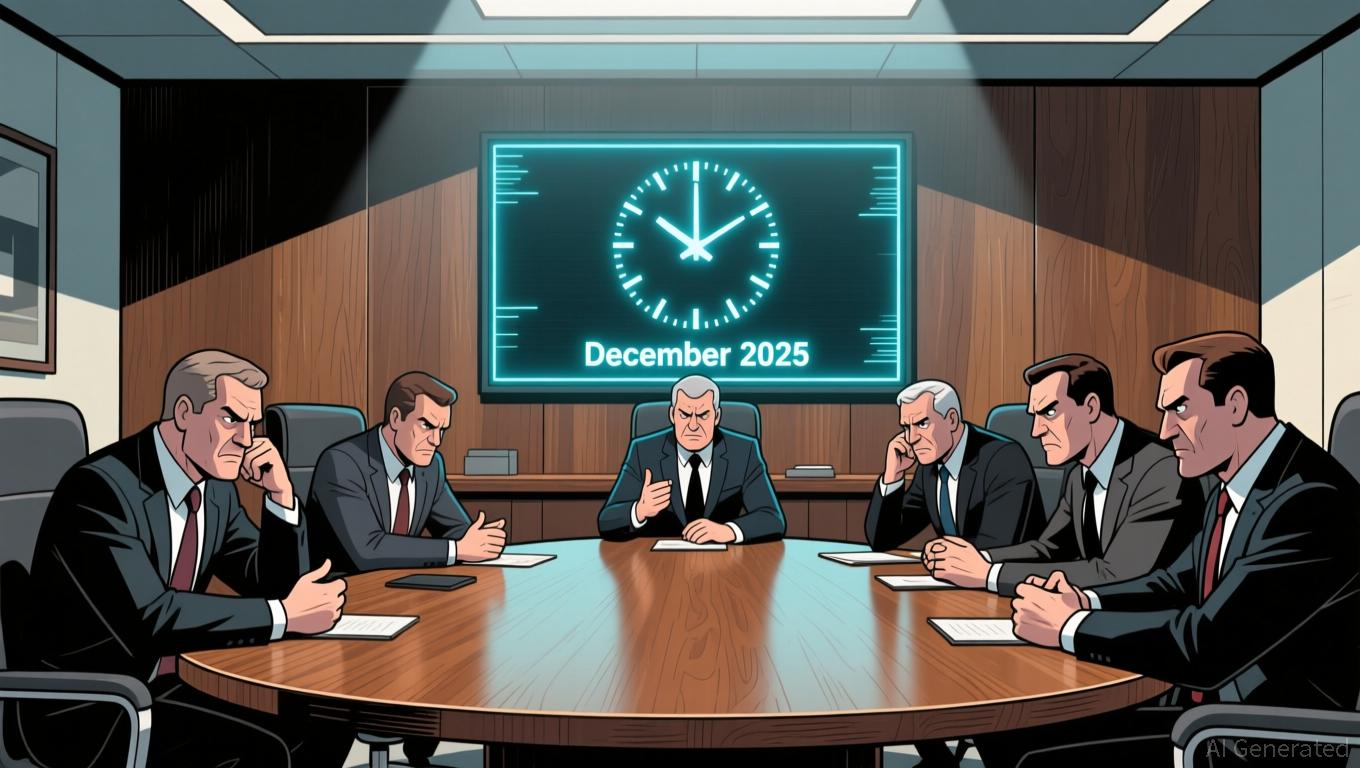Fed's Potential December Rate Reduction Depends on Inflation and Labor Market Dynamics
- The Fed enters a blackout period before its December meeting, with markets expecting a rate cut despite internal divisions over inflation and labor market signals. - Meeting minutes revealed a "strong split" among policymakers, with some favoring easing due to cooling labor markets and modest policy tightness, while others caution against premature action. - New York Fed President John Williams' remarks on "room for further adjustment" boosted market bets for a December cut, though Morgan Stanley revised
The Federal Reserve is about to begin its pre-meeting blackout period ahead of the December policy session, as traders and analysts continue to anticipate a rate reduction despite internal disagreements and mixed economic indicators. Recent events—including updated projections from leading financial firms and significant statements from Fed officials—have strengthened the view that the central bank will lower interest rates before the year concludes.
The minutes from the Fed’s October meeting,

Morgan Stanley, which recently changed its position on a December rate reduction,
The most significant boost to market optimism came from New York Fed President John Williams, who last week signaled a willingness to consider further rate decreases. “I see monetary policy as somewhat restrictive... So I believe there’s still potential for another adjustment soon,” Williams remarked,
The Fed’s top leadership—including Chair Jerome Powell and Vice Chair Philip Jefferson—has yet to provide a clear signal about December, fueling speculation about possible dissenting votes. Some regional Fed presidents, such as Susan Collins of Boston and Lorie Logan of Dallas, have argued for keeping rates steady until inflation more clearly approaches the 2% goal,
This ongoing debate highlights broader economic challenges. Although inflation remains above the target—September’s CPI was 3% and PCE stood at 2.8%—Fed officials have noted that price pressures could ease as the effects of tariffs diminish,
As the December meeting draws near, investors will be watching closely for signals in the Fed’s statement and press conference. A rate cut would be consistent with the central bank’s history of responding to changing data, but any surprise could spark market volatility. For now, the combination of strong institutional forecasts, influential official remarks, and continued economic strength has made December a pivotal moment for Fed policy.
Disclaimer: The content of this article solely reflects the author's opinion and does not represent the platform in any capacity. This article is not intended to serve as a reference for making investment decisions.
You may also like
Zcash (ZEC) Price Rally: Is a Revival of Privacy Coins Possible in 2025?
- Zcash (ZEC) surged 472% to $420 in 2025, driven by regulatory clarity and institutional adoption under U.S. Clarity/Genius Acts. - Grayscale's $137M ZCSH investment and 30% Q4 shielded supply growth highlight Zcash's privacy-flexibility appeal over Monero. - Electric Coin Co.'s Orchard protocol and Winklevoss's 1.25% ZEC acquisition reinforce Zcash's position as top privacy coin ($7B market cap). - Critics warn of Bitcoin competition risks and hype claims, while Zcash's sustainability hinges on balancing
DASH Experiences Rapid Growth: Uncovering the Forces Behind Its Rise
- DASH's 2025 price surged 150% YTD driven by 35% active address growth and 50% transaction volume increase. - Aster DEX integration boosted TVL to $1.4B and daily volumes over $27.7B via hybrid AMM-CEX model. - Institutional adoption and emerging market demand for privacy features (77% transaction obfuscation) fueled momentum. - ASTER token's 1,650% surge and DeFi partnerships highlight DASH's role in bridging liquidity fragmentation.
SolarPlus Forum 2025 Review: A Clear Look at Germany’s Evolving Solar Landscape

Memecoins and AI Tokens Crash Hard: Market Caps Nosedive as Panic Deepens